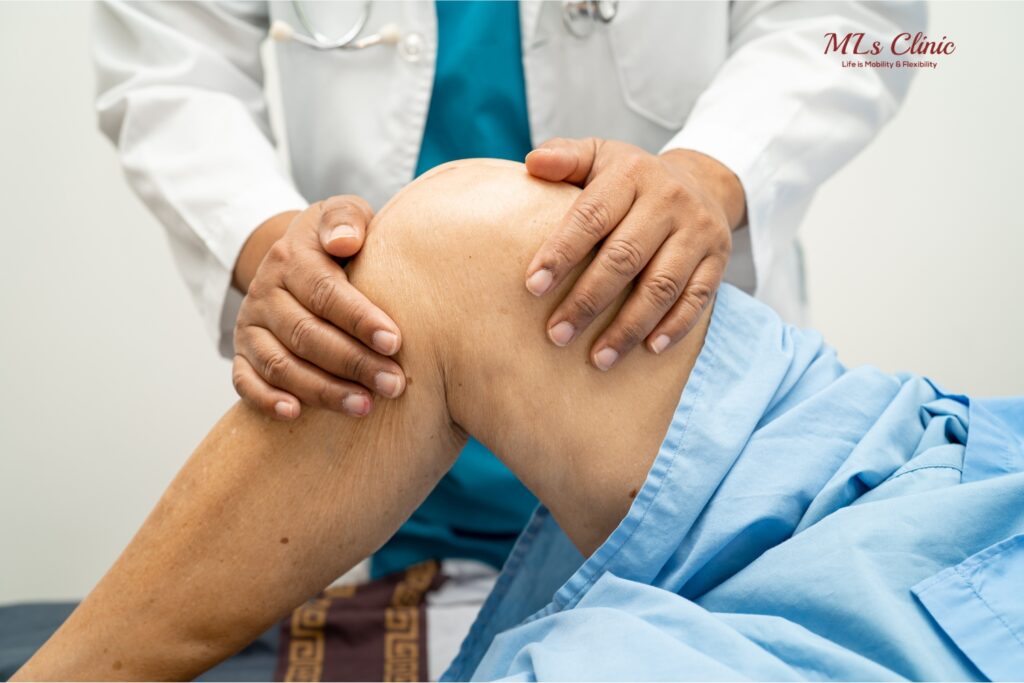6 Safe And Effective Exercises After Knee Replacement Surgery: What You Need To Know

People often believe they need to rest after Knee Replacement Surgery, but this is a common misconception. Exercises after Knee Replacement Surgery are equally important. Recovering through physical therapy and safely exercising on your own plays a big role in how well you heal and get back to your normal activities.
Regular exercise is important to help you regain strength and movement in your knee after a Total Knee Replacement. Gradually returning to your daily activities is also key for a full recovery. Your orthopedic surgeon and physical therapist might suggest exercising for 20 to 30 minutes a day, or even 2 to 3 times a day in the early stages of recovery, and walking for 30 minutes. While performing exercises, one must maintain proper form and gradually increase range of motion.
This blog will help you understand the exercise and activity program by Dr. Preetesh Choudhary, who is the Best Knee Replacement Surgeon, has planned for you. To ensure a safe recovery, consult your therapist or surgeon before starting any of the exercises.
Essential Knee Exercises After Knee Replacement Surgery
Knee health is critical, whether you’re recovering from surgery, experiencing knee pain, or looking to prevent injuries. The exercises after knee replacement surgery are specifically designed to enhance mobility, strengthen the muscles surrounding the knee joint, and promote overall flexibility. Performing these exercises consistently will help improve knee function and reduce pain.
Below are detailed descriptions of each exercise presented in the chart.
1. Ankle Pumps
The ankle pumps exercise is vital for maintaining blood circulation, reducing stiffness, and preventing swelling in the knee area, especially post-surgery. It focuses on strengthening and stretching the calf muscles.
- How to perform:
- Position: Lie down on your back, keeping your legs straight.
- Movement: Gently move your foot up and down at the ankle joint, as far as you can in both directions.
- Reps: Repeat 10 to 15 times on each side.
- Benefits: This simple exercise activates circulation in the lower leg and prevents swelling, making it a great initial movement before starting other exercises.
2. Knee Press
The knee press focuses on strengthening the quadriceps, the muscles at the front of the thigh. Having strong thigh muscles is important for keeping your knee stable. This is one of the important exercises after Knee Replacement Surgery.
- How to perform:
- Position: Lie flat on your back with your legs stretched out straight. Place a folded towel under your knee for quadriceps and for Hamstring, place towel under the ankle.
- Movement: Press the knee downward, engaging the thigh muscles.
- Hold: Hold the position for 10 seconds, then relax.
- Reps: Perform 10 to 15 repetitions on both legs.
- Benefits: Strengthening the quadriceps helps provide stability to the knee joint and reduces the load on the knee during activities like walking and climbing stairs.
3. Straight Leg Raise
This exercise is excellent for improving the strength of the thigh muscles without putting stress on the knee joint.
- How to perform:
- Position: Lie flat on your back. Bend one leg at the knee and keep the other leg straight.
- Movement: Lift the straight leg to a 40-degree angle.
- Hold: Hold for 5 to 10 seconds and then slowly lower it.
- Reps: Repeat 10 to 15 times for both legs.
- Benefits: The straight leg raise strengthens the quadriceps and hip flexors, which support the knee joint and improve range of motion.
4. Side Lying Abduction
Side-lying abductions target the muscles along the sides of the hips, essential for maintaining balance and stability during movement.
- How to perform:
- Position: Lie on your side with the non-operated leg on top.
- Movement: Raise the top leg upwards, holding it in the air for 10 seconds, and then lower it slowly.
- Reps: Perform 10 to 15 repetitions on both sides.
- Benefits: Strengthening the hip abductors helps stabilize the knee during walking, running, and other activities that involve leg movement.
5. Sitting Knee Extension
Sitting knee extensions are an excellent way to strengthen the muscles around the knee without applying too much pressure on the joint.
- How to perform:
- Position: Sit in a chair with your back straight and feet flat on the ground.
- Movement: Slowly straighten one leg, raising it as high as possible.
- Hold: Hold the extended position for 10 seconds, then lower the leg back down.
- Reps: Repeat 10 to 15 times for both legs.
- Benefits: This exercise improves knee strength and mobility, especially in individuals recovering from knee surgery or injury.
6. Heel Slides
Heel slides are a fundamental movement to regain knee flexibility and range of motion and is one of the essential exercises after knee replacement surgery.
- How to perform:
- Position: Lie on your back with your knees straight.
- Movement: Slowly slide your heel toward your buttocks, bending the knee as far as possible.
- Hold: Hold the position for 5 to 10 seconds and then return the leg to the starting position.
- Reps: Perform 10 to 15 repetitions on each leg.
- Benefits: Heel slides help improve knee flexibility and range of motion, making them particularly useful in recovery from surgery.
Conclusion
Incorporating these exercises after knee replacement surgery into your daily routine. These exercises not only aid in knee recovery but also prevent further injuries and pain by strengthening the muscles that support the knee joint.
Remember to consult your Best Knee Replacement Surgeon in Indore, Dr. Preetesh Choudhary, before starting any new exercise regimen, especially if you have an existing knee condition or are recovering from surgery.
By following this routine, you’ll be taking active steps toward keeping your knees healthy and pain-free.






